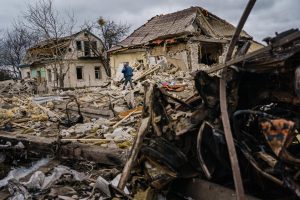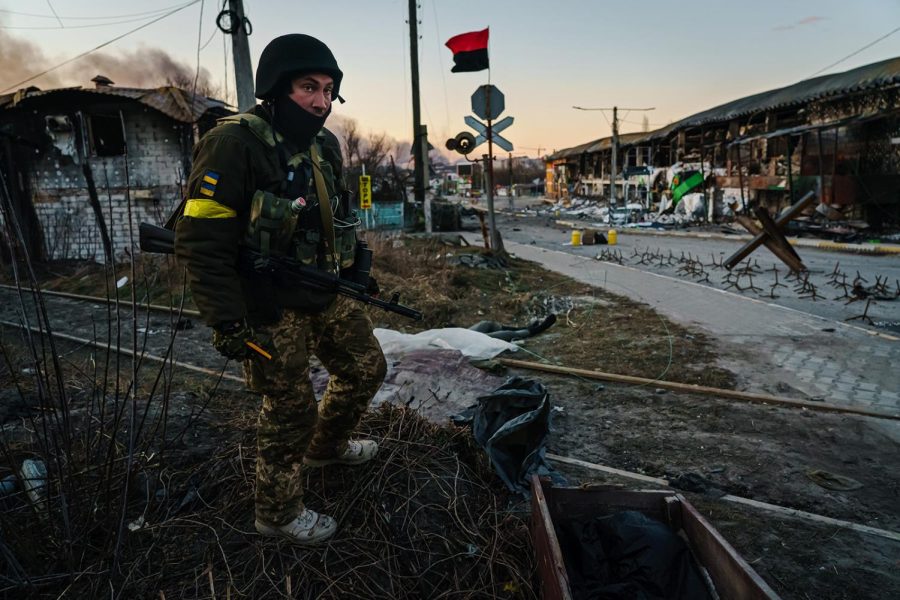Ukraine, Russia: decades of invasions, conflict
March 16, 2022
In 1922 the Soviet Union was created with the goal of spreading communism. The Soviet Union combined 15 republics including Ukraine, Russia, Belarus and many others.
The Soviet Union was a world superpower only a couple years after it was formed until the time it collapsed.
The Soviet Union collapsed in 1991 due to economic, military and political reasons.
A couple of months after the Soviet Union’s collapse, countries started to declare independence.
August 24, 1992 Ukraine declared its independence from the Soviet Union and decided to leave its Russian imperial legacy behind to pursue democracy.
Following its independence, Ukraine remained neutral by creating military partnership both with Russia and the West.
Despite attempts at peace and neutrality, they were met with conflict.
Things began to escalate when Ukraine tried to establish a partnership with NATO and the European Union to establish a democracy.
In November 2013, then President of Ukraine Viktor Yanukovych began shifting his plans away from the European association agreement in favor of Russia due to his close ties with the Russian Federation. This led to mass protests and demonstrations—Euromaidan or Revolution of Dignity—against Yanukovych, which ultimately threw him out of the presidential office.
Immediately following Euromaidan, the war of Donbas occurred. The war of Donbas was an armed conflict and protests by pro-Russian, anti-government separatist groups that took place in Donetsk and Luhansk—collectively called the Donbas.
Russia spectated the events unfolding in Ukraine and decided to attack and annex the southern peninsula of Ukraine and Crimea in 2014.
Vladamir Putin, the president of Russia, said this was aimed to ensure proper conditions for the people of Crimea to be able to freely express their will.
In 2015, a peace agreement was brokered with the help of France and Germany, but the conflict has continued in the region of Luhansk and Donetsk between the Ukrainians and the rebel separatists.
Valdimir Putin, officially recognized Donetsk and Luhansk as sovereign states independent from the Ukrainian government and ordered military forces to enter into those states calling it a peacekeeping mission in 2021.
At the end of 2021, Russia began building up troop strength by placing approximately 100,000 soldiers along its border with Ukraine, which spurred fear of a possible attack.
After months of fear and anticipation, Putin announced a special military operation to demilitarize Ukraine and launched a full-scale invasion on Feb. 24. Russian troops entered the northern part of Ukraine from Belarus in an attempt to encircle Kyiv, the capital of Ukraine.

The same day, Russia took control of the North Crimean canal.
Russian troops also took control over the Chernobyl power plant despite a stiff resistance from Ukrainian soldiers. A Russian security source told Reuters in an interview that Russia took over Chernobyl as a signal to NATO not to interfere militarily.
According to a March 10 statement from the United Nations, 549 civilians in Ukraine have been killed and 957 injured.
According to CBS News, a U.S. official estimated that between 2,000 and 4,000 Ukrainian troops have been killed, and between 5,000 and 6,000 Russian troops have been killed. However, the numbers aren’t certain.
Despite the number of deaths and threats to NATO members’ economies, NATO has not stepped in.
Ukraine is not a NATO country, which means NATO doesn’t have to step in and likely won’t, because it is nearly impossible for the West to move ahead due to the potential nuclear war.
Putin said that any support from western countries to Ukraine would be considered a declaration of war against Russia and they should keep their nuclear weapons ready.
Even though the U.S. and NATO cannot directly step in, they have helped Ukraine by supplying them with troops and weapons. They have also heavily sanctioned Russia.
On March 8, President Joe Biden announced a ban on imports of Russian gas and oil, making Russia the highest sanctioned country in the world.
According to ABC News, the Pentagon has ordered about 12,000 service members to Europe.



